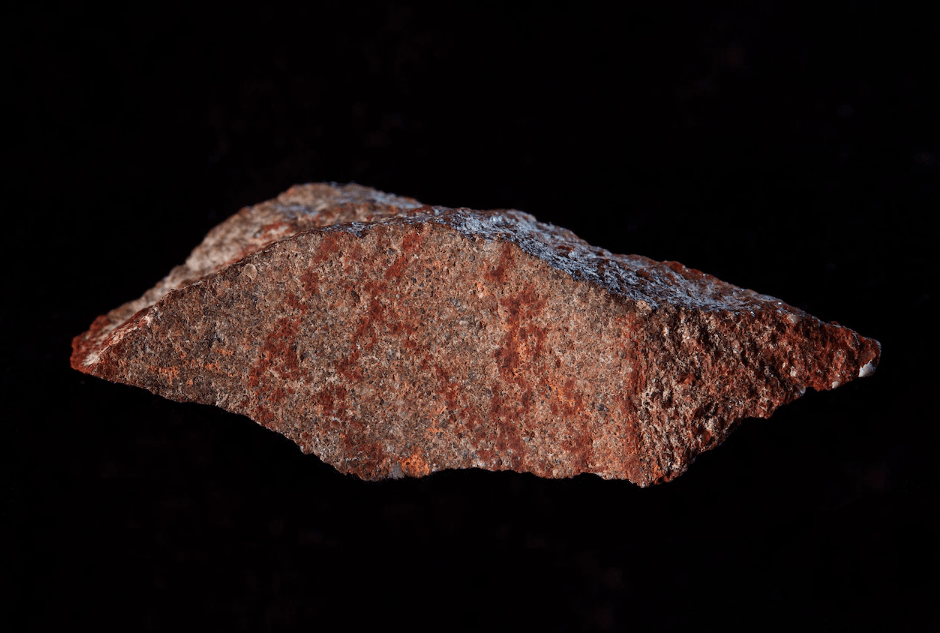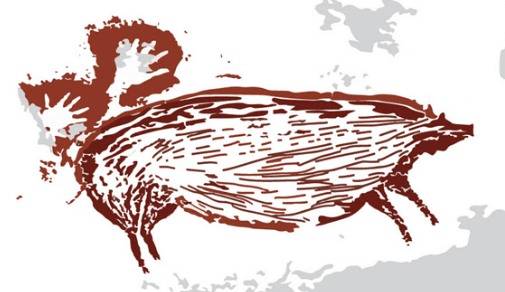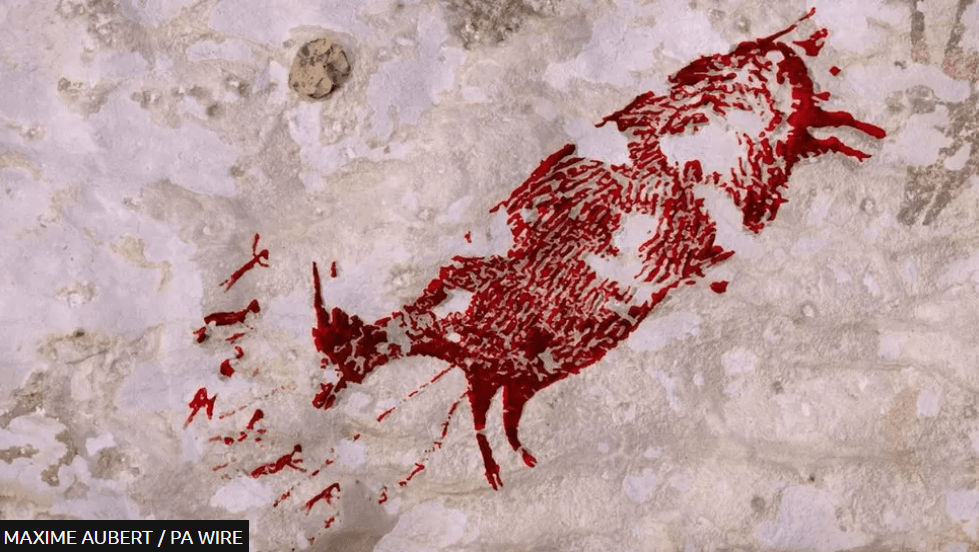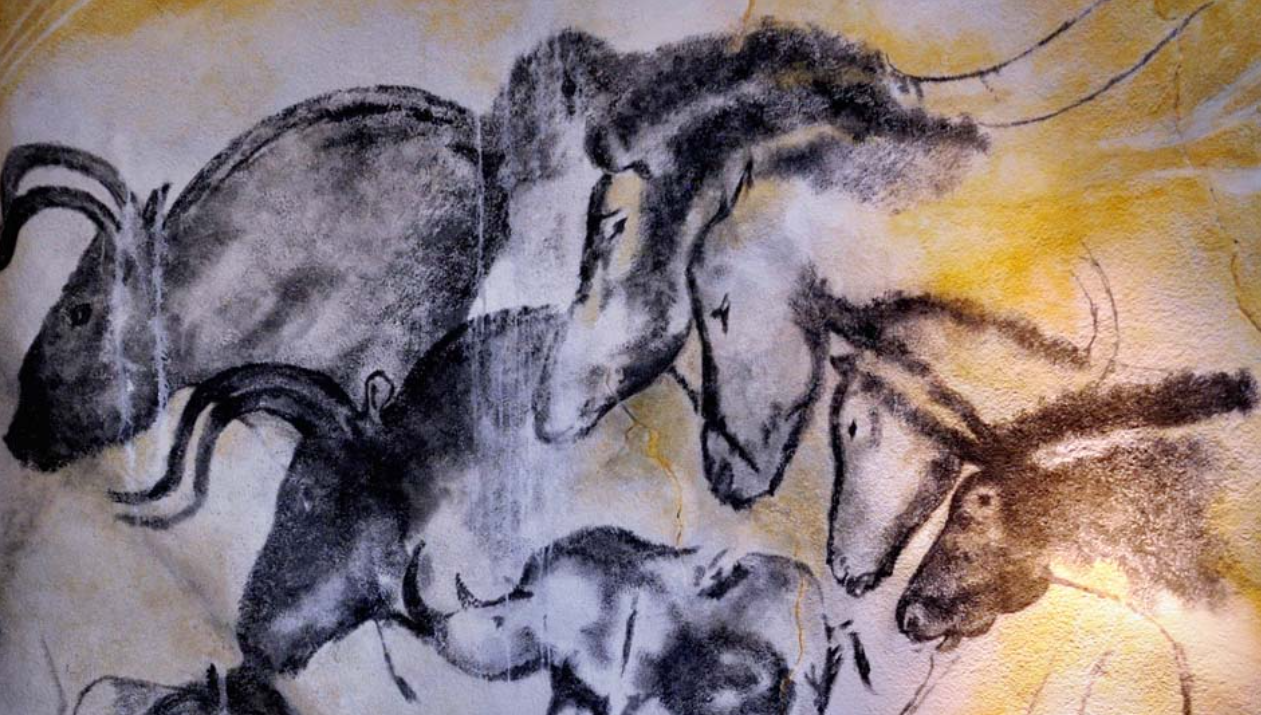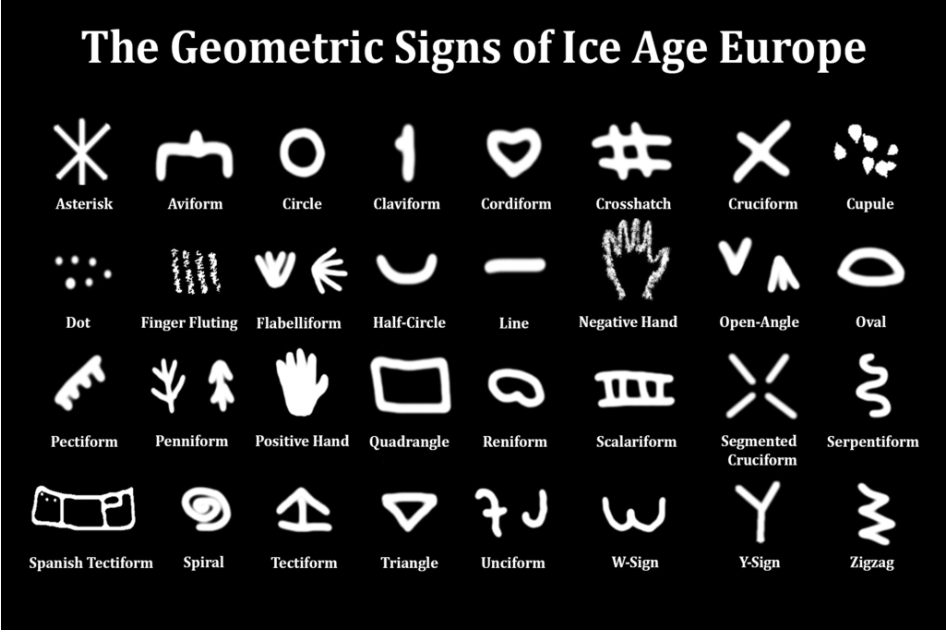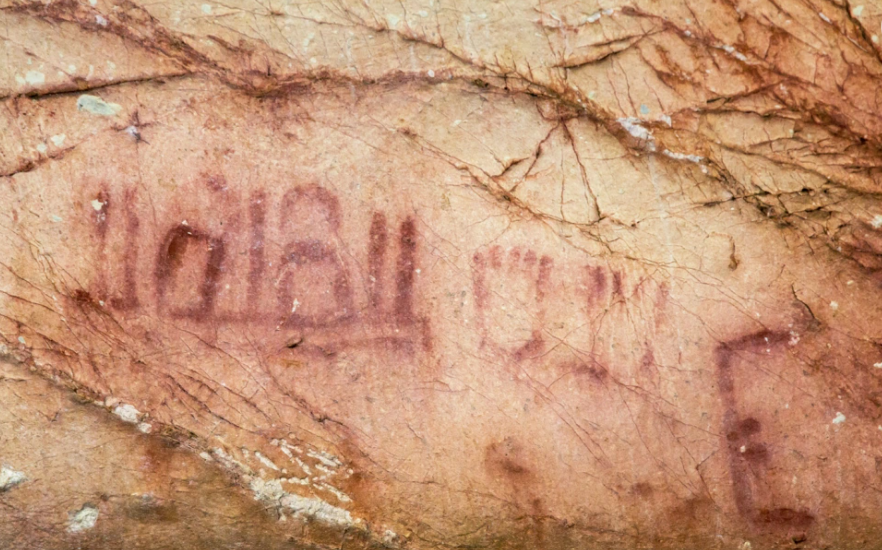Cave Painting
'Art' is a three letter word that is open to a variety of interpretations. I will use a loose definition and say that it is the use of creative thinking, by humans, to communicate things that they perceive to be of importance in the world. Such a definition would cause things such as signifying maps and accountancy to be considered art.
We are talking about something I believe to be central to the continued existence of Homo Sapiens as the sole representative of the human family. When trying to figure out what it was that favoured Sapiens over our, now extinct, human cousins, our artful nature art is distinguishing characteristic. Whilst there is evidence that some of the cousins also generated art, it is currently not believed to be at the level of sophistication, as that developed by Sapiens.
When attempting, from our place in history, to try and understand what it was that ancient people were trying to communicate in their art is always going to involve a lot of guesswork but we do know it was important and that considerable resources were invested in its creation.
The works of art we have found maybe divided into portable and fixed. Portable includes small carvings and jewellery. These are things that could on the journeys of the itinerant, hunter gather, owners. Fixed art includes cave painting which is the subject of this page created at sites which received regular, periodic visits by a nomadic people.
Beginnings
For about 1.5 million years, the Paleolithic world delivered steady but very slow progress, the hand axe, animal skin clothing and fire. This slow progress suddenly accelerated with the result of a range of innovative flint tools and the creation of art. For a long time this acceleration was thought to have begun around 40 - 50 kya (generally taken as the start Upper Paleolithic, a period of time that continued from to the end of the last ice age 11 kya ), but that figure is currently being pushed back as new finds are made that predate this date. Opposite is a photo of a rock on which paint (ochre) can be seen. It is thought that it part of a bigger rock that was painted with a '#' symbol. The paint work is dated at 73 kya, making it currently, the worlds oldest drawing. The stone was found at the Blombos cave in South Africa, a site occupied by early modern humans between 100kya - 70kya. Other artefacts recovered from the site include 2 'painting kits', shells in which red ochre rock was ground and mixed with other elements such as crushed bone. These have been dated at around 100 kya.
Oldest Cave Paintings
Up until 2019 the oldest cave art was thought to be European, with the earliest examples being from around 40 kya, however a cave called Leang Bulu'Sipong 4 in Sulawesi, Indonesian has provided images that are dated from 45.5 kya.
The oldest image is a representational picture of Sulawesi warty pigs. The picture on the left shows one animal from a group of four, three of which are definitely pigs. Due to time and erosion the the other three images are now fragmentary but give the impression that the artist intended to show a scene of a herd of pigs. The pig shown on the left was 134cm x 54cm
In another part of the same cave there are other pictures done in a similar style. The image on the left dates from 44 kya and appears to show a hunting scene with a type of buffalo called an Anoa, being confronted by several human figures holding perhaps spears or ropes which are directed at the anoa. On closer inspection, the human figures are depicted as having animal heads. The scene shown on the left is only part of a larger picture that that includes other animals being hunted. Taken all together the total panel extends for nearly 5 meters.
These images from Indonesia hold the current record for the world's oldest, but there is a lot of the planet still to be investigated and it is very likely that these dates will be pushed backwards.
European Cave Painting
When seeking evidence of European cave painting by Homo Sapiens, it must be remembered that they the current thinking is that they did not arrive on the continent until about 50kya. The ladder shaped picture can be found deep inside three caves in Spain (opposite is one from Cueva de Ardales, Málaga) have been dated at <65kya, which means they must be Neanderthal. There is speculation that whilst the ladder shape is dated from this time the additional decoration of dots and animals might have been added later. It should be noted that currently only a small % of cave art has been reliably dated.
The technique used to date the ladder picture used Uranium/ Thorium decay to determine the age of minerals (Calcite) left behind by water running over the surface of the picture. So these dates can be taken as giving a minimum age of the painting.
The picture opposite was also dated using the Uranium Thorium technique and the 2 red dots below the right most hands have been dated from 40.6kya whilst the hands themselves date from 37.3 kya. This illustrates the problem of looking at what could be taken as being a single coherent piece, then realising that it was created in 2 steps, over thousands of years apart. These red dots, from El Castillo cave, Spain are thought to represent the earliest cave painting done by European Homo Sapiens.
The early workings where quickly improved upon and all around the foothills of the Pyrenees fantastic examples can be found of the animals that inhabited this Paleolithic world.
From Chauvet notable not only for the quality of it's drawings but also for the fact that predators are depicted along with the more usual herbivores.
The picture on the left shows a a pack of lions (the now extinct European lion did not have a mane) which are on the hunt. Painted about 36kya, the charcoal renderings have been drawn upon rock which has been prepared by scraping down the underlying rock. Animals have been overdrawn as if being corrected, perhaps as a result of the artist returning at a latter date or other artists correcting an earlier work.
Herbivores also occur in the art work. A combination of Horses, Woolly Rhinos, Mammoths, Cave Bears, Aurochs (a type of wild cow) and Bison are also represented.
Abstract Images
Along with the pictures of animals and the occasional stick like human, there is abstract imagery to be found. Work Done by G. Von Petzinger identified some 32 signs (see left) that can be found in many of the caves of ice age Europe, separated by both geography and time. The signs do not seem to represent a pictographic dictionary, as different symbols show up in different caves and in different combinations. Rather they seem to represent a set of abstract symbols that, with the exception of positive and negative hand prints, do not seek to reproduce the outside world but rather be convey a meaning which was understood to the group that created it. Movement between different locations by different groups could cause knowledge of the shape of the symbol to spread whilst not spreading the meaning intended to be conveyed by the original artist.
Whilst the symbols being used were reasonably consistent how they were interpreted was local. Such symbols could represent many different types of information for example:
- Sympathetic magic to encourage successful hunting.
- Shamanistic religion and communication with the other world.
- Some kind of counting system to measure the passage of time (the seasons for instance) or the number of animals to be found at a particular time.
- Ownership of territory or objects.
- A map of the features to be found in the surrounding area.
The number of possible interpretations probably precludes any clear consistent explanation being found (never say never) but images such as that found in the La Pasiega inscription (see left) definitely leave one with the impression that whilst perhaps this is not a writing system, it perhaps starts to look like the the precursor of one.
Similar abstract symbolism can still be found today. The classic example is amongst the San people of South Africa who are a hunter gather people who leave images on rock walls. Inquiries reveal that these people view the rock as an interface between this world and others. The art that they create is for religious, shamanistic reasons.
Unanswered Questions
There are many issues raised by these paintings including:
- Firstly how is it that Homo Sapiens, from opposite sides of the world, start producing such similar art within a few thousand years of each other?
- Secondly, what is being communicated in these animal pictures?
- Thirdly, what is not being shown? I find it odd that the animals are not shown without reference to their environment. Where are the mountains, rivers, valleys' in which these animals might be found? Where are the plants and fruits that would have been consumed along with meat?
- Fourthly, what is the meaning of the abstract images that occur both accompanying pictures and as stand alone statements?
